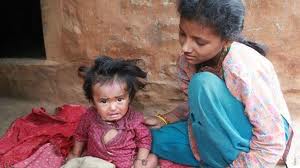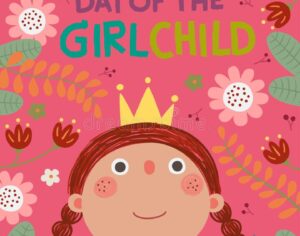Is This Interest In Young Girls Merely A Matter Of Tokenism?
The second blogpost in our series for the International Day Of The Girl Child, Oct 11 comes from Nepal, and is written by our youth champion Shreejana Bhajracharya. She also blogs at Kumari: A feminist.
 We all agree that “Safe abortion is a Human right.” Nepal also believes that every woman should be provided with safe abortion services on their demand regardless of her age, marital status, caste, ethnicity and any other background. But traditional and stereotypical societal structures reinforce women’s lack of autonomy and decision making capacities, thus putting their lives at risk on a daily basis through deprivation, physical and sexual violence, rape, unsafe abortions, and others. Unsafe abortions still contribute to 13-50% of the maternal mortality across Asia. A large burden is borne by young girls.
We all agree that “Safe abortion is a Human right.” Nepal also believes that every woman should be provided with safe abortion services on their demand regardless of her age, marital status, caste, ethnicity and any other background. But traditional and stereotypical societal structures reinforce women’s lack of autonomy and decision making capacities, thus putting their lives at risk on a daily basis through deprivation, physical and sexual violence, rape, unsafe abortions, and others. Unsafe abortions still contribute to 13-50% of the maternal mortality across Asia. A large burden is borne by young girls.
A large part of this can be solved by allowing young women and girls to be part of the solution. But shockingly, young girls are also deprived on the political empowerment that is already their due. Nepal has a policy insisting on representation for least two young people in any committee whether it is health facility, community management team, forestry committee, etc. In practice, however, young people are either never invited or are not assigned any roles and responsibilities.
Sometimes youth participation is invited only to fulfill their criteria. I recently met a bunch of young girls (12-19) years old during a workshop on “Youth-Adult Partnership” in Kailali. Young girls visiting health service centers in Nepal, are given a general health check. Among eight young girls only one girl visits the primary health post frequently for these checks, and that too because she is young member of the Health facility Management Committee. On further questioning though I found that she even does not know why she has been selected in the committee and what her roles are.
This means that roles assigned to young girls is only tokenism. These members are also easily manipulated for their participation in any community activities.
With such little youth participation, there are still several barriers for young girls seeking safe abortion services. Although abortion is legalized in Nepal, there is much stigma for a young girl seeking abortion services. A layman in Nepal thinks that abortion services are only for married women. When a young unmarried girl goes to abortion centers for information on abortion she is seen as “bad girl”, someone lacking in moral character.
Because of such stigma, young girls are also invisible to policy makers. There is also a lack of programmes that focus on the reproductive health of young girls. While existing programmes pay attention to the needs and demands of female children or older women, girls particularly in their adolescence are ignored.
Such stigma has also fostered anti-abortion movements. One of the experts in Nepal said, “There were no anti-abortion groups while abortion was legalized in 2000. Anti-abortion groups are increasing day by day. And young girls are in their gun point. Even widely it has been spread that abortion in first pregnancy is dangerous.”
Another important barriers for young girls accessing safe abortion services is the media and its inaccurate articles. MyRepublica ran an article with several problems.
Read it here: http://www.myrepublica.com/portal/printable_news.php?news_id=62033.
The real problem is the media trying to spice up news by stigmatizing statements like “In Valley colleges students are going for abortion” and “young girls in college dress go for abortion daily”. Abortion is legal in Nepal and this means it is legal for all. Safe abortion service centers are open between 10 a.m. – 5 p.m. which is also the time when schools and colleges operate. The service centers do not deny services for young girls with uniform. So what does it matter that the young girls seeks abortion in her college/school dress? Articles like this have bad impact among young girls and often drive them away from centers for safe abortion.
Here is the picture which I personally dislike a lot:
Though it is largely assumed that only married women would required abortion, there are a lot of young girls who face unwanted pregnancies due to contraceptive failure, rape, incest, or just due to lack of proper information and knowledge. Therefore the incidents of unwanted pregnancies among teenage girls are also increasing as are the cases of unsafe abortion are on rise.
Every young girl and people in her life (boy friends, relatives, friends, and parents) should be aware of family planning devices which should be made available, accessible and affordable for all in their reproductive age. Young girls are not only beneficiaries of health services there are also partners.
It is also time to start treating young people with respect. They are experts on issues that affect people own age. Their positive thinking and decision making has to be given due respect. Their participation cannot be tokenism, their values cannot be ignored, their decisions cannot be infantilized and their health cannot be ignored.








